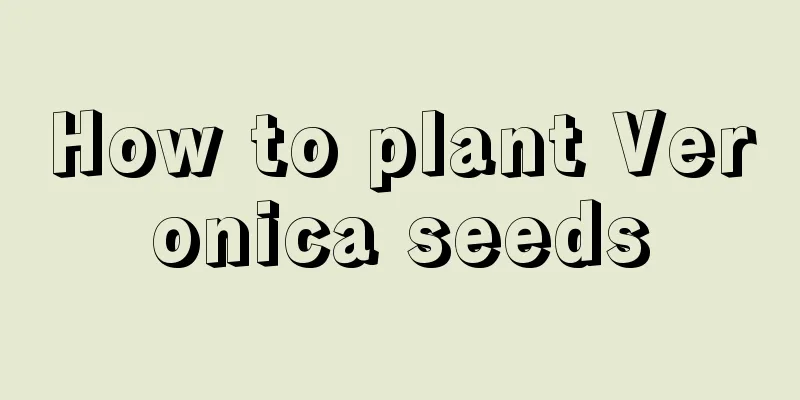The best way to promote orchid flowering (what fertilizer to apply to promote rooting, budding and flowering of orchids)

|
"Flowers grow in the sun" does make sense. Because "everything grows with the sun", orchids can accumulate more nutrients and promote the growth of flower buds in good sunlight; while "buds grow in the shade" does not necessarily lead to strong seedlings. Just imagine, if the orchid grows and develops in a shady environment, even if it can sprout, the sprouts will be weak and it will be difficult to grow into strong grass. Tips to Promote the Blooming of Orchids①Maintaining healthy orchid seedlingsFrom the physiological habits of orchids, inhibiting the vegetative growth of orchids can promote the reproductive growth of orchids. For example, in the maintenance process, by applying less nitrogen fertilizer, more phosphorus and potassium fertilizers, proper water control, and increasing sunlight , the formation of flower buds can be promoted. In addition, orchid buds sprout from strong and mature orchid plants. If the orchid seedlings are weak, they will not bloom even if there are many of them. Therefore, maintaining strong orchid seedlings is also a prerequisite for promoting the growth of flower buds. ② Conjoined clusters of flower budsOrchids with many seedlings connected together are easy to bud and bloom, but it is difficult for them to bloom if there are too few seedlings. This is a method of promoting flowering that is more recognized in the orchid-growing community, and it is also a common phenomenon in our orchid cultivation. Orchid lovers generally have this experience: if the orchid is repotted and divided in the spring, there will be fewer flower buds in the fall, but more flower buds the following year. This shows that orchid seedlings should not be divided too frequently, and the number of orchids planted in each pot should not be too small, otherwise it will not be easy to sprout flower buds. Generally speaking, large, strong grasses with more than 3 spring orchid seedlings or more than 5 cymbidium seedlings are likely to bud and bloom. ③ Topdressing fertilizer should be appropriateLess nitrogen fertilizer should be applied after the orchid grows up, otherwise the orchid's nutritional growth will be too vigorous. The mature orchid will produce a second generation of leaf buds, which will affect the germination of flower buds. When the orchid enters the bud formation stage after mid-July each year, it is time to start applying flower-promoting fertilizer. The flower-promoting fertilizer is mainly phosphorus fertilizer and supplemented with potassium fertilizer to promote the expansion of the pseudobulb of the orchid, which is conducive to the differentiation of flower buds and the emergence of flower buds. ④ Appropriate water control to promote buddingControlling water is one of the effective ways to promote the growth of flower buds. During the vegetative growth period from July to August, orchids require a lot of water. The more water there is, the more vigorous the vegetative growth of the orchids will be, and the orchid seedlings will grow and develop rapidly. If you reduce the water supply to the orchid at this time, that is, extend the watering interval appropriately, so that the orchid is in a relatively thirsty state, it can be stimulated to sprout flower buds. ⑤Increase the temperature difference between day and nightYears of experience in growing orchids have shown that when the temperature is slightly higher during the day, the orchids can produce more nutrients through photosynthesis. When the temperature drops a little at night, the orchids' respiration weakens, and the amount of organic matter decomposed and consumed will be much less. In this way, the nutrients in the orchid will accumulate, which is conducive to the growth and germination of the orchid buds. |
<<: When should Clivia be watered (how to judge when it is time to water Clivia)
Recommend
Cultivation methods and precautions of dense leaf lotus
1. Maintenance methods 1. Soil: The soil for bree...
What are the cultivation methods and precautions of Phnom Penh Molan?
How to cultivate Phnom Penh Orchid Golden Edged M...
Diagram of the method of leaf cutting of Kalanchoe
Kalanchoe is a succulent plant . Since it belongs...
How to make and use pomegranate flower fertilizer
Pomegranate is suitable for flower fertilizer The...
Diseases of the lucky tree and their prevention and treatment
Leaf spot disease of lucky tree The lucky tree wi...
How to make the green radish take root quickly and turn one leaf into a whole pot
1. How to make the green radish take root quickly...
Apple tree management methods in April
With the arrival of April, the earth comes back t...
Cultivation and watering of Guanyin bamboo
Guanyin bamboo is a typical evergreen shrub that ...
What soil is suitable for growing tomatoes?
Tomato Introduction Tomato is a perennial or annu...
How to grow cloud bamboo
1. Temperature Asparagus fern needs to be grown i...
Why are the leaves of the Dancing Yale wrinkled?
reason The root is not slowed down well After Dan...
How to prolong the flowering period of cactus
1. When does it bloom? If you want to see it bloo...
What is the best month to plant spring sweet potatoes?
When to plant spring sweet potatoes The sowing ti...
Places suitable for growing pineapples
Pineapple Planting Conditions 1. Temperature cond...
How to grow tulips
Planting method Soil Preparation Tulips prefer sa...









